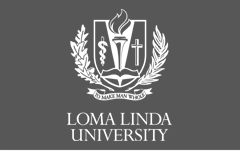Abstract
INTRODUCTION AND OBJECTIVES: Degloving soft tissue injuries are the result of skin and tissue avulsing from the underlying muscle, bone or connective tissue. This trauma is usually the result of a tangential force with an irregular surface catching a part of the body at a low velocity, such as when the tires of a car run over an arm in a motor vehicle accident. Important structures then become exposed with considerable damage to the avulsed skin. Currently, there is no established expected operative time for degloving injury surgeries, nor has any study looked at the length of hospital stay and the number of required for reconstruction. The present study seeks to establish these baseline characteristics for extremity degloving injury management for ultimate comparison to newer techniques.
METHODS: A detailed review of the electronic medical record from a level I trauma center for dates ranging from 06/2012 to 07/2018 revealed 186 trauma cases with potential degloving. Because there is no specific diagnosis code for a degloving injury, each patient’s chart was reviewed for signs that the traumatic injury was specifically a degloving injury. The investigators reviewed the encounter history to find surgical, emergency, admission, and/or office visit events to find the desired information. Some of the main keywords that were looked for were in these events were “degloving”, “avulsion” and “skin flap” to identify a degloving case. The patients’ ages, sex, location of the injury, cause of injury, and procedure done were all collected when possible, as well as the patient’s length of stay from the date on the specific case in the list, the operative time (in minutes), and the number of procedures done to reconstruct the patient.
RESULTS: Of the 186 trauma cases, 26 degloving patients were identified. The age range for patients identified was 2 to 58 with a mean of 32.9 years. The sex distribution was 69.3% male and 30.7% female. 100% were upper extremity injuries. The average length of stay for these patients was 8.54 days. The mean number of surgical procedures was 2.9. The total operative time was and average of 360.8 minutes.
CONCLUSIONS: This study has produced a baseline measure of common economic parameters associated with degloving injuries. This data shall serve as comparative data for novel management protocols. Of the 26 patients that definitively matched the degloving injury qualifications, several were noted to be outliers that had extended OR times, an increased number of procedures, and an increased length of stay compared to the majority of patients. This led to the increased average OR time, average number of procedures, and average length of stay than what was expected by investigators initially.
Recommended Citation
Sheridan, Brenden
(2019)
"A Comparative Analysis of Baseline Operative Time and Length of Stay for Traumatic Degloving Injuries,"
Loma Linda University Student Journal: Vol. 3:
Iss.
2, Article 15.
Available at:
https://scholarsrepository.llu.edu/llu-student-journal/vol3/iss2/15

